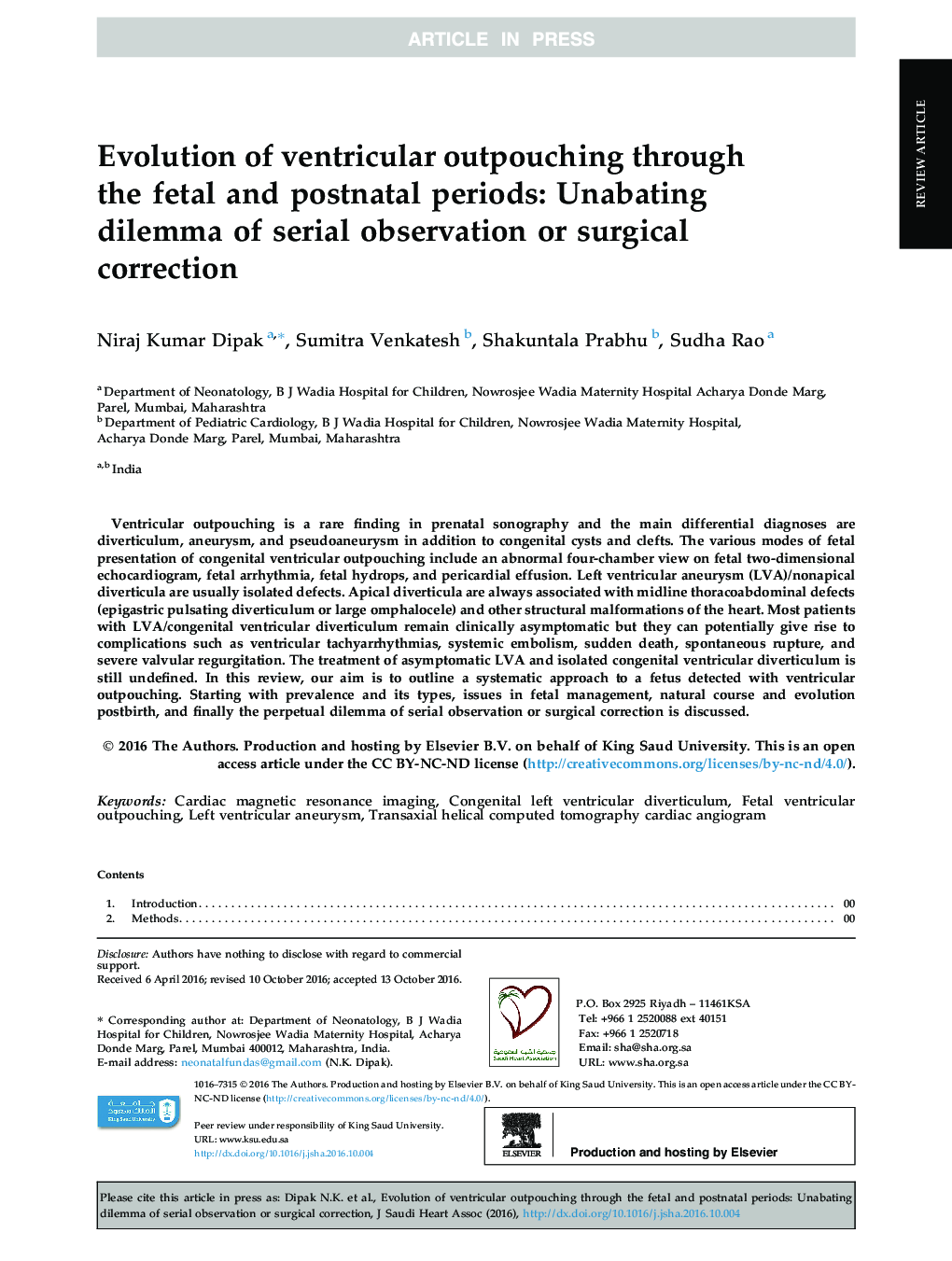| Article ID | Journal | Published Year | Pages | File Type |
|---|---|---|---|---|
| 8669889 | Journal of the Saudi Heart Association | 2017 | 8 Pages |
Abstract
Ventricular outpouching is a rare finding in prenatal sonography and the main differential diagnoses are diverticulum, aneurysm, and pseudoaneurysm in addition to congenital cysts and clefts. The various modes of fetal presentation of congenital ventricular outpouching include an abnormal four-chamber view on fetal two-dimensional echocardiogram, fetal arrhythmia, fetal hydrops, and pericardial effusion. Left ventricular aneurysm (LVA)/nonapical diverticula are usually isolated defects. Apical diverticula are always associated with midline thoracoabdominal defects (epigastric pulsating diverticulum or large omphalocele) and other structural malformations of the heart. Most patients with LVA/congenital ventricular diverticulum remain clinically asymptomatic but they can potentially give rise to complications such as ventricular tachyarrhythmias, systemic embolism, sudden death, spontaneous rupture, and severe valvular regurgitation. The treatment of asymptomatic LVA and isolated congenital ventricular diverticulum is still undefined. In this review, our aim is to outline a systematic approach to a fetus detected with ventricular outpouching. Starting with prevalence and its types, issues in fetal management, natural course and evolution postbirth, and finally the perpetual dilemma of serial observation or surgical correction is discussed.
Related Topics
Health Sciences
Medicine and Dentistry
Cardiology and Cardiovascular Medicine
Authors
Niraj Kumar Dipak, Sumitra Venkatesh, Shakuntala Prabhu, Sudha Rao,
